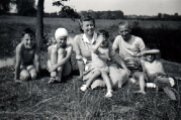We’ve just returned from a very relaxing vacation in Minnesota, visiting our elder daughter Hannah and her family: son-in-law Michael, and grandchildren Callum (almost a teenager) and Zoë (just 11).
Since we’d decided not to make any serious road trip this visit, apart from a short, overnight stay to La Crosse in Wisconsin, about 150 miles south of the Twin Cities, I travelled light this year. No heavy DSLR camera, no laptop. In fact, for the first time, I simply used my mobile phone for both images and video clips.
When we moved north to Newcastle upon Tyne in the autumn of 2020, I acquired a new – and better – mobile that allowed me to run many of the apps that so many utilities expect everyone to deploy these days. And, of course, the Samsung model I chose had a far better resolution camera than my Chinese cheepo.
And because of my more limited mobility right now (a painful nerve inflammation affecting my lower back, legs, and feet) Steph and I stayed close to home in St Paul, only taking our usual local walks as we’ve enjoyed in previous visits when I felt up to it. Even so, close to where Hannah and Michael live there is so much to see; their house sits at the top of the Mississippi Gorge bluff.
The weather was incredible, mostly warm (hot even) and dry. Just one afternoon of rain on Michael’s birthday when we had to postpone the planned grilling until the next day.
And talking of grilling. I can’t remember a visit when Michael fired up the BBQ or the Big Green Egg so many times, or we simply ate outside, even at the various restaurants we patronised.
Our flight from Amsterdam to Minneapolis-St Paul arrived on time on 29 May at around 12:30, and Hannah, Callum, and Zoë were waiting at the airport to meet us. Navigation through US Immigration, baggage claim, and Customs was probably the smoothest I’ve enjoyed throughout the many decades I’ve been visiting the USA. It was actually quite a pleasant experience.
So, for us, it was early evening British Summer Time, and normally Steph and I would manage to stay awake for only an hour or two before submitting to jet lag, and finally crashing. Not this time. We both had a reasonably comfortable flight over the Atlantic in Delta Comfort+, and managed some sleep.
On arrival, it was bright and sunny and warm and, being Memorial Day, everyone was at home. So we sat in the garden, enjoying a cup of tea to begin with, followed (in my case) by a couple of the fantastic local beers. There are so many to choose from these days. But more of that later.
![]() Late afternoon, and Michael cranked up the BBQ and we enjoyed a very satisfying dinner of Von Hanson steaks, beer brats, and salad. So it must have been almost 9 pm that we admitted defeat, and headed to bed. I’ve never been over jet lag so quickly.
Late afternoon, and Michael cranked up the BBQ and we enjoyed a very satisfying dinner of Von Hanson steaks, beer brats, and salad. So it must have been almost 9 pm that we admitted defeat, and headed to bed. I’ve never been over jet lag so quickly.
I now wish I’d taken more notice of the various beers I sampled – I could have tried a different beer for everyday of our stay, there are so many to choose from. There’s nothing quite like a cold, cold beer on a hot afternoon when the temperature is reaching 90ºF.
Less than a mile from Hannah and Michael’s home in the Highland Park area of St Paul (map), redevelopment of the 122 acre site of the former Ford Motor Company Twin Cities Assembly Plant (closed in 2011) began in 2020, now renamed Highland Bridge.
 The local supermarket, Lunds & Byerlys has relocated a couple of blocks west along Ford Parkway to Highland Bridge. On the first floor they have opened The Mezz Taproom—with a terrace overlooking the new development—where you have the choice of about 20+ beers on tap, plus some wines. Michael took me there one blisteringly hot afternoon a few days after we arrived in St Paul.
The local supermarket, Lunds & Byerlys has relocated a couple of blocks west along Ford Parkway to Highland Bridge. On the first floor they have opened The Mezz Taproom—with a terrace overlooking the new development—where you have the choice of about 20+ beers on tap, plus some wines. Michael took me there one blisteringly hot afternoon a few days after we arrived in St Paul.
It’s an interesting concept. There is no bar. With an electronic wrist tag (which opens the beer tap) you can sample as much or as little of any of the beers on offer, with a wide range of glass sizes and shapes to match. You just pay for the amounts consumed, which are electronically tallied. Simples!



Panorama of the Highland Bridge redevelopment, looking west.
The Highland Bridge redevelopment comprises commercial and residential units, including those for the elderly, and townhouses. Thoughtfully, and together with the St Paul Parks and Recreation department, the developers have created several parks with innovative water features that also act as storm drainage (when it rains in St Paul, it really rains). All parks cater for all ages, with paths, seating, and roller and skateboard parks, beach volleyball courts, and even a Little League pitch as well.
Steph and I took a wander (very slowly) through these. What an impressive development, even though I can’t say I particularly admired the architecture. The water features are already attracting a range of wildlife, and it will be interesting to see how the biodiversity increases in years to come.
Michael’s birthday celebration was postponed one day due to rain on the actual day. He smoked pork ribs on the Big Green Egg. I don’t think I have ever tasted such delicious (and meaty) ribs, that just fell off the bone.
Several years ago, Hannah and Michael adopted a lovely (but occasional crabby) rescue ginger cat called Hobbes, now about 11 years old.

Then, during the Covid lockdown, Bo (a rescue Yorkshire terrier from Alabama) joined the family, followed about 18 months later by Ollie (a combined Yorkie, Shih Tzu, and at least one another breed, also from Alabama). Ollie and me bonded very quickly.

Bo

Ollie
Earlier, I mentioned my reduced mobility during this trip. But one evening, after enjoying another fine BBQ, and with a couple of G&Ts tucked away, not to mention a glass or two of red wine, I couldn’t resist the music (just take a listen, an incredible track from Joe Bonamassa with Australian Mahalia Barnes, Riding With The Kings).

Here’s the outcome, that I very much regretted the following morning (and perhaps posting this video might come to regret for a long time to come).
Compare this with another video, taken six years earlier with a five-year-old Zoë which, given my back and legs, would have been more appropriate.

And S’Mores, of course.
What a great way to take time out . . .
Other blog posts in this Minnesota series:












































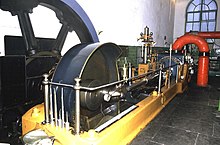





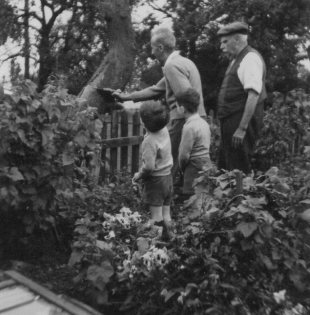









 My son-in-law, Michael, is – like me – a beer aficionado, and keeps a well-stocked cellar of many different beers. It’s wonderful to see how the beer culture has blossomed in the USA, no longer just Budweiser or Coors. I had opportunity to enjoy a variety of beers. Those IPAs are so good, if not a little hoppy sometimes. However, my 2018 favorite was a Czech-style pilsener,
My son-in-law, Michael, is – like me – a beer aficionado, and keeps a well-stocked cellar of many different beers. It’s wonderful to see how the beer culture has blossomed in the USA, no longer just Budweiser or Coors. I had opportunity to enjoy a variety of beers. Those IPAs are so good, if not a little hoppy sometimes. However, my 2018 favorite was a Czech-style pilsener, 
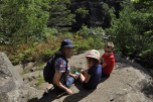














 The economic justification for and value of the canals waned, and they fell into disuse, and no longer navigable. However, in recent decades there has been a resurgence in the use of inland waterways. Today some 2000 miles of navigable waterways (canals and rivers) are managed by the
The economic justification for and value of the canals waned, and they fell into disuse, and no longer navigable. However, in recent decades there has been a resurgence in the use of inland waterways. Today some 2000 miles of navigable waterways (canals and rivers) are managed by the 










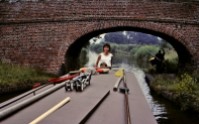

















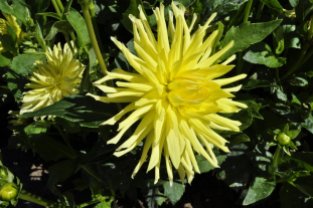














































































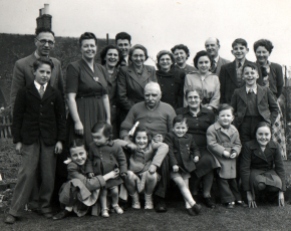






 Lily May Jackson, née Healy, was born on 28 April 1908 in Shadwell in the East End of London, where her father,
Lily May Jackson, née Healy, was born on 28 April 1908 in Shadwell in the East End of London, where her father, 





















